Haunting melodies of morin khuur give voice to cultural heritage of Inner Mongolia, Chen Nan and Yuan Hui report.
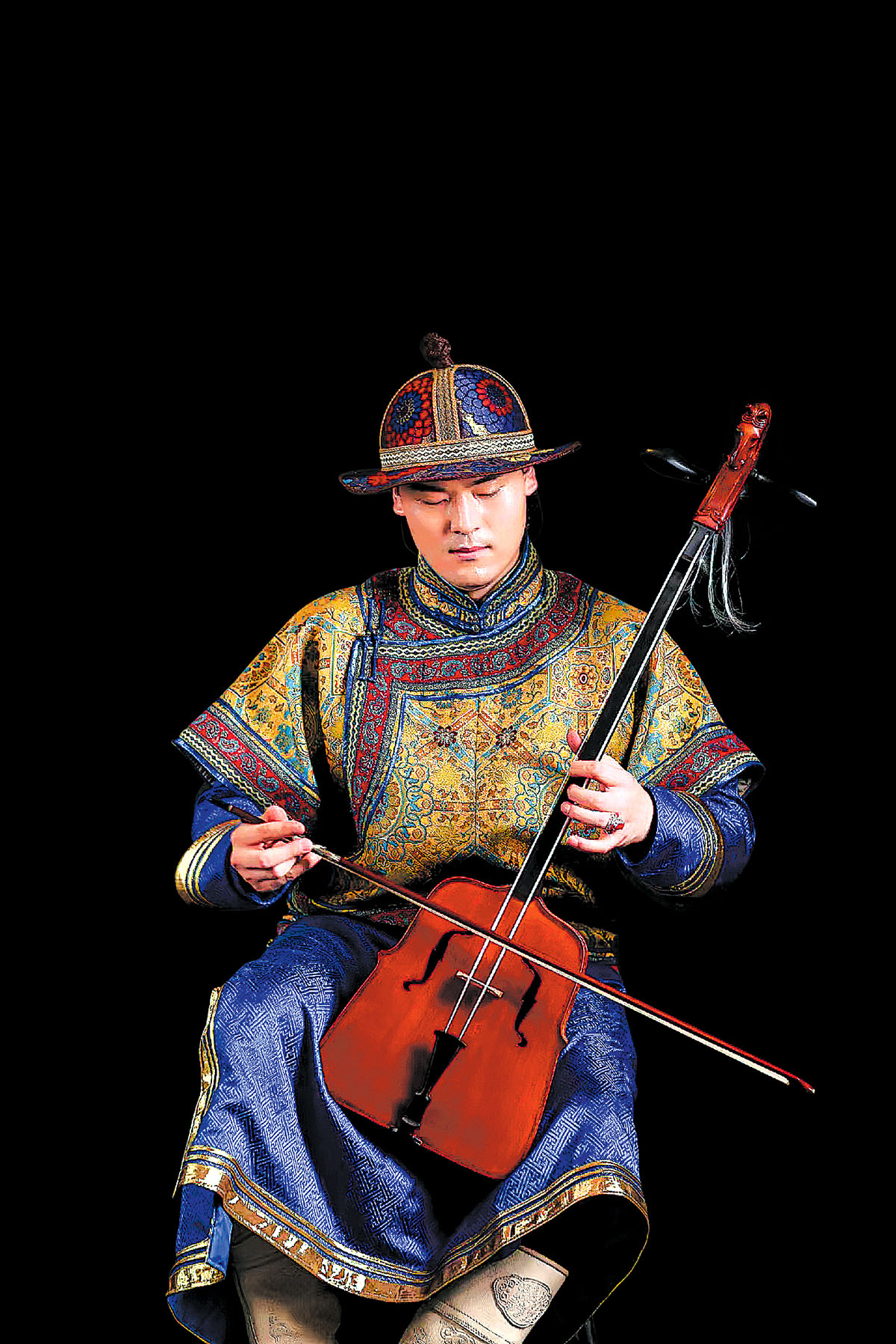
Editor's note: Traditional arts and crafts are supreme samples of Chinese cultural heritage. China Daily is running this series to show how master artisans are using dedication and innovation to inject new life into heritage. In this installment, we find out the enduring allure of a Mongolian musical instrument.
In the vast and wind-swept steppes of the Inner Mongolia autonomous region, where nomadic traditions entwine with the pulse of nature, there exists a profound connection between the people and their music. The connection is embodied by the haunting melodies of the morin khuur, a traditional two-stringed instrument often referred to as the horse-headed fiddle.
The morin khuur occupies a revered position as a key instrument in traditional Mongolian music. Its beautiful tones are often used to accompany khoomei, or throat singing, a vocal style characterized by harmonic overtones, which further enhances the depth and emotional resonance of ethnic Mongolian music.
READ MORE: Band tunes into their heritage
Beyond its musical prowess, the morin khuur is also used during ceremonial contexts, such as weddings, festivals and rituals, where it connects participants with their cultural heritage and their ancestors.
Despite modernization and urbanization, the morin khuur remains a cherished part of daily life for many families of Mongolian ethnicity. The instrument is also integrated into the educational system, where it is taught in schools as part of the efforts to preserve cultural heritage and promote traditional music education, passing down both musical techniques and cultural values from one generation to the next.
Morin khuur was inscribed on UNESCO's Representative List of the Intangible Cultural Heritage of Humanity in 2008 (originally proclaimed in 2003).
Its cultural significance has gained international attention. In May, when International Olympic Committee President Thomas Bach visited Shanghai, he received a morin khuur as a gift. This exchange underscored the instrument's role as a cultural ambassador.
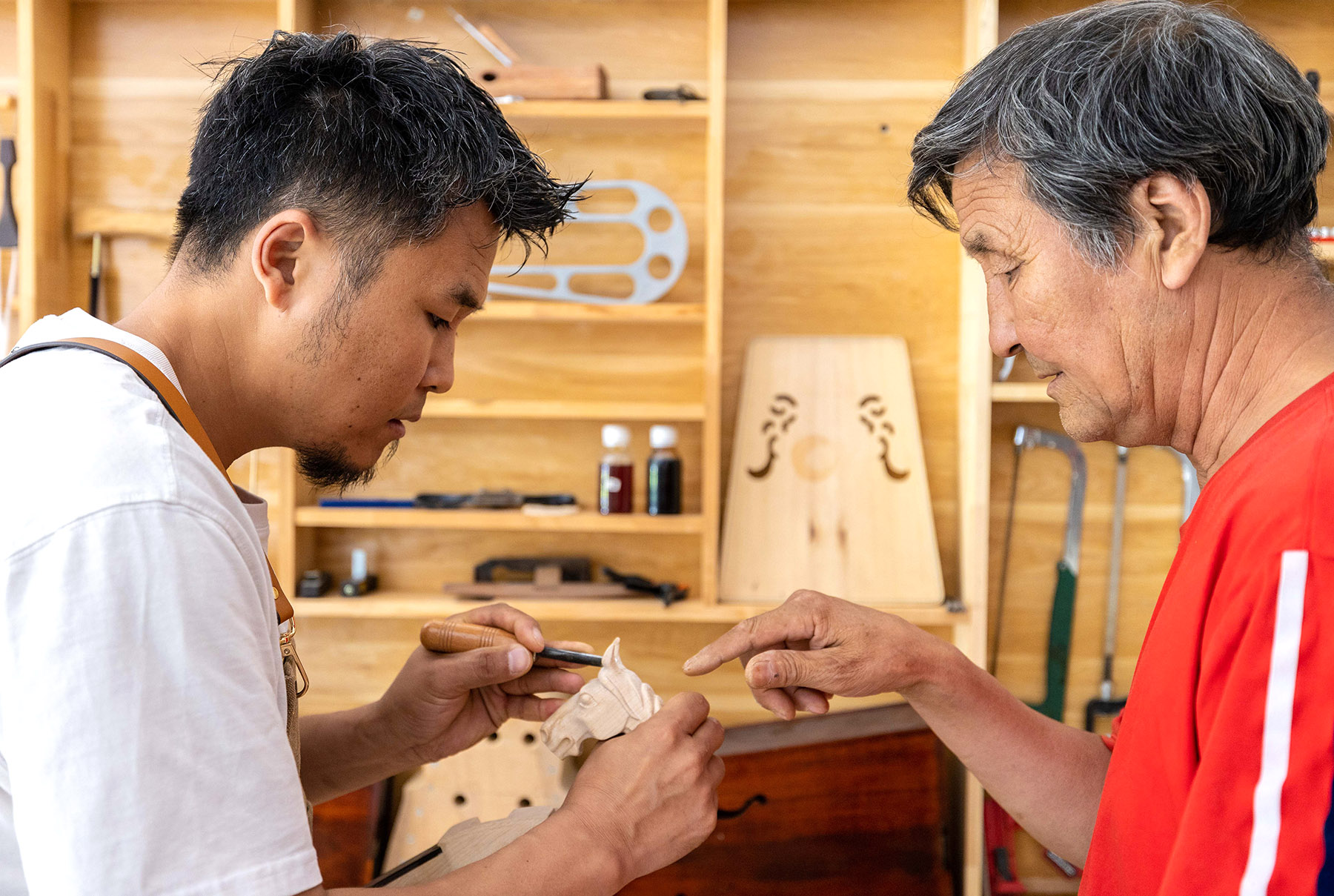
Musical magic
According to a report by the Inner Mongolia Intangible Cultural Heritage Protection Center, the history of the morin khuur can be traced back to the Tang (618-907) and Song (960-1279) dynasties, and it became popular during the time of Genghis Khan (1162-1227).
As the world evolves, and modernity encroaches upon ancient traditions, the morin khuur is a steadfast reminder of the enduring spirit and rich cultural tapestry of ethnic Mongolians. Its melodies echo through time, carrying with them the stories, dreams, and aspirations of a people deeply connected to their land, their horses, and to each other.
The instrument's lasting appeal can be attributed to the efforts of dedicated artisans.
Ulji, a 65-year-old morin khuur maker, whose name means "lucky" in Mongolian, is helping to preserve its rich heritage through his dedication to the craft.
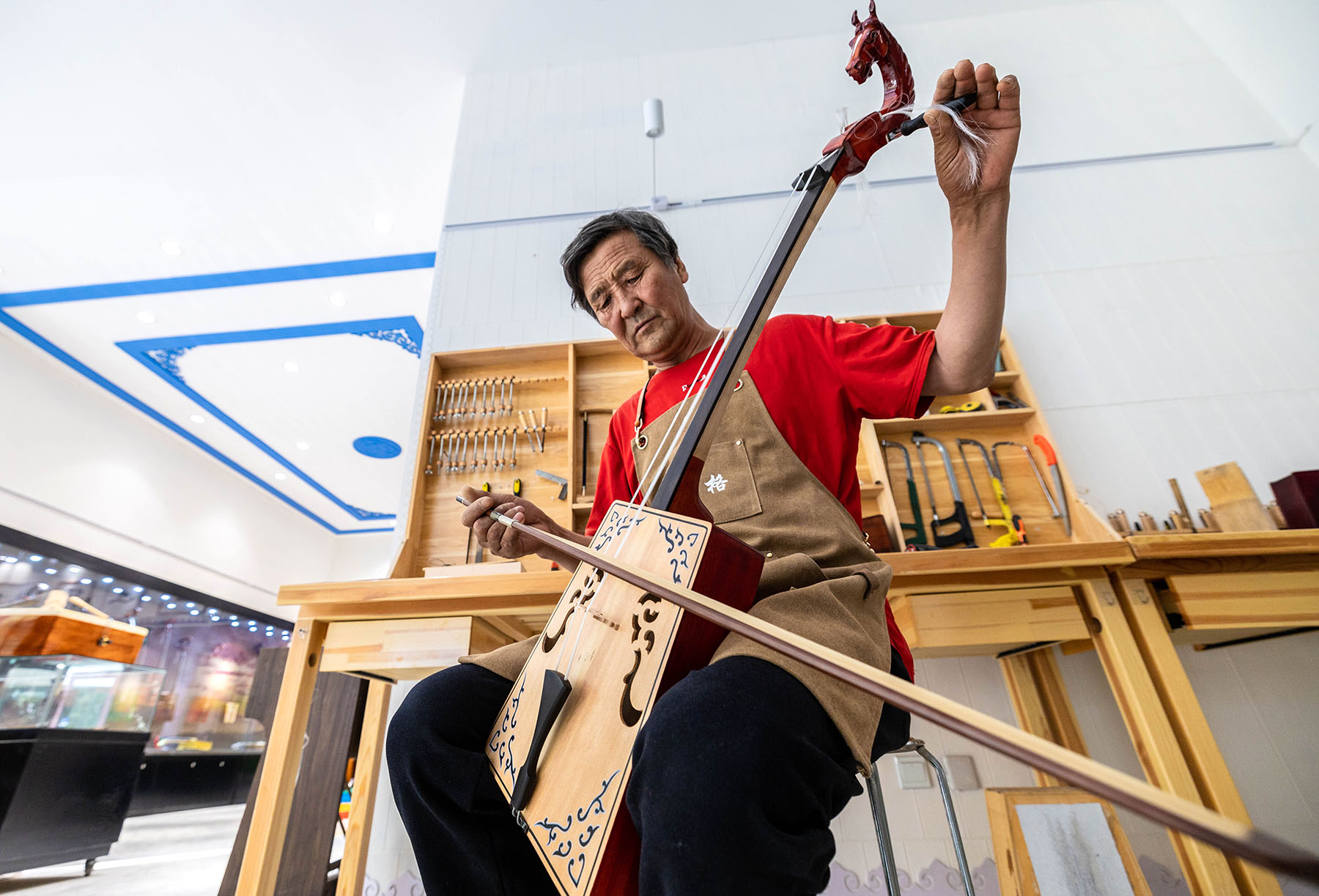
The owner of a morin khuur workshop in Hohhot, capital of the Inner Mongolia autonomous region, Ulji has about 3,000 orders annually from home and abroad, mostly from professional musicians and music lovers.
He says that the instrument's captivating sound, which resonates with the vastness of Inner Mongolia's landscape, is central to its allure. Played with a bow, it produces haunting melodies that evoke the nomadic spirit and reflect the area's natural beauty.
Ulji was drawn to the instrument as a child, thanks to his father and grandfather, who were both morin khuur makers.
"They also played instruments, like the morin khuur and the sihu, a bowed instrument with four strings, and I often listened to the songs they performed at home," says Ulji, who was born and brought up in the Ar Horqin Banner in Chifeng, Inner Mongolia.
In 1978, he began to learn how to make the morin khuur and seven years later, he completed his inaugural instrument. Fueled by a deep passion for ethnic culture, he has remained unwavering in his dedication to this craft for four decades, never once setting aside his tools.
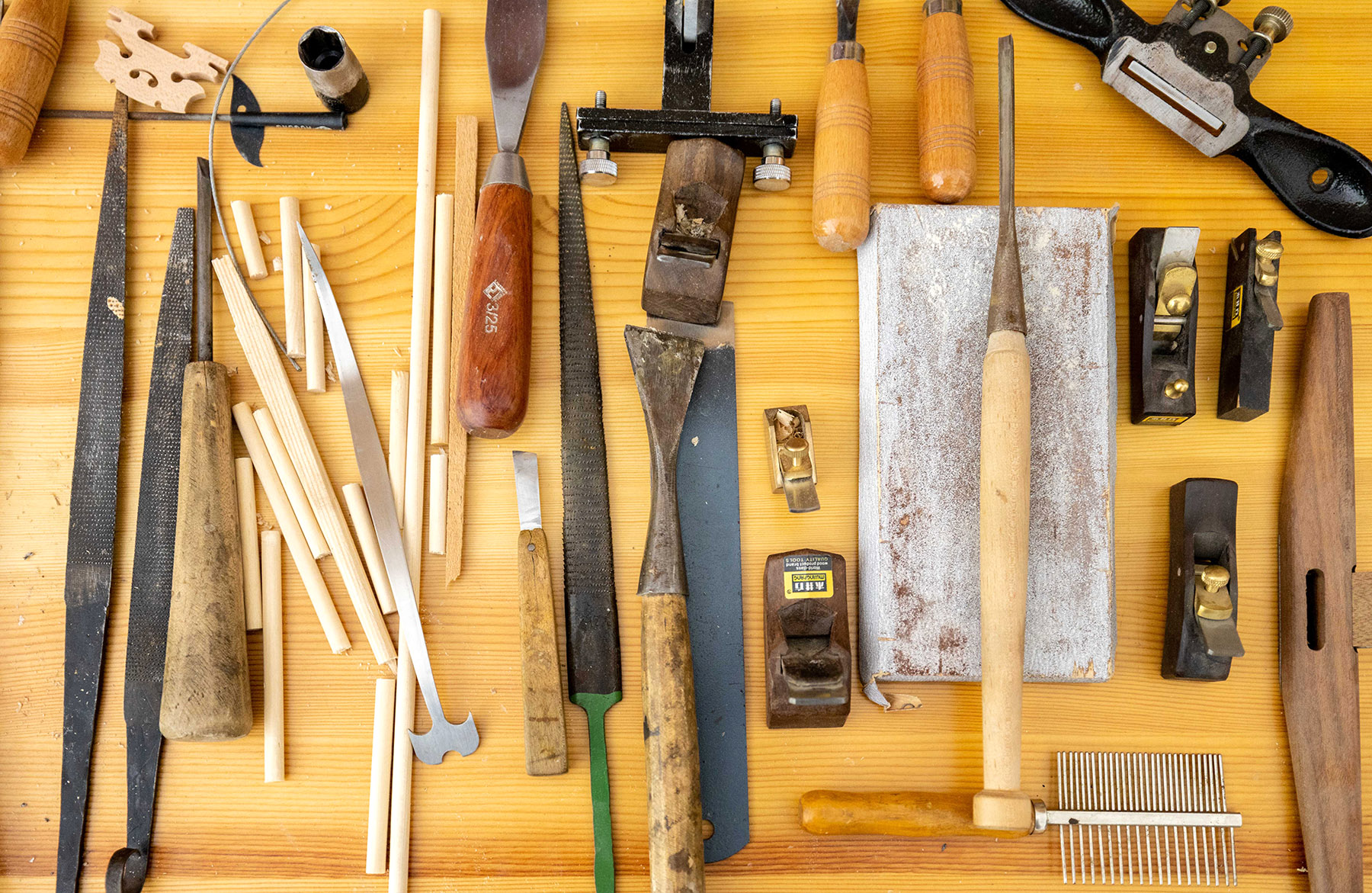
It takes about two to three years to make one instrument. The process commences with the selection of materials. The morin khuur's body is traditionally hewn from a solitary piece of seasoned wood, selected for its resonance and strength.
Ulji emphasizes the necessity of sun-drying the wood for a period ranging from five to 10 years. Inadequate drying poses the risk of shrinkage or warping, ultimately compromising the instrument's sound quality.
Then, the wood is meticulously shaped by the experienced hands of artisan to reach the desired size and curvature.
Carving a horse's head into the instrument's neck imbues it with the spirit of the majestic animal, which symbolizes the rhythm of life. Created with precision and attention to detail, the horse's head serves as not only a decorative element, but also a testament to the deep bond between the Mongolian people and their horses.
"I love horses. When I was a child, I enjoyed riding my horse on the grasslands. One of my favorite Mongolian songs is about a horse winning a competition. The lyrics convey the beauty and strength of the horse," says Ulji.
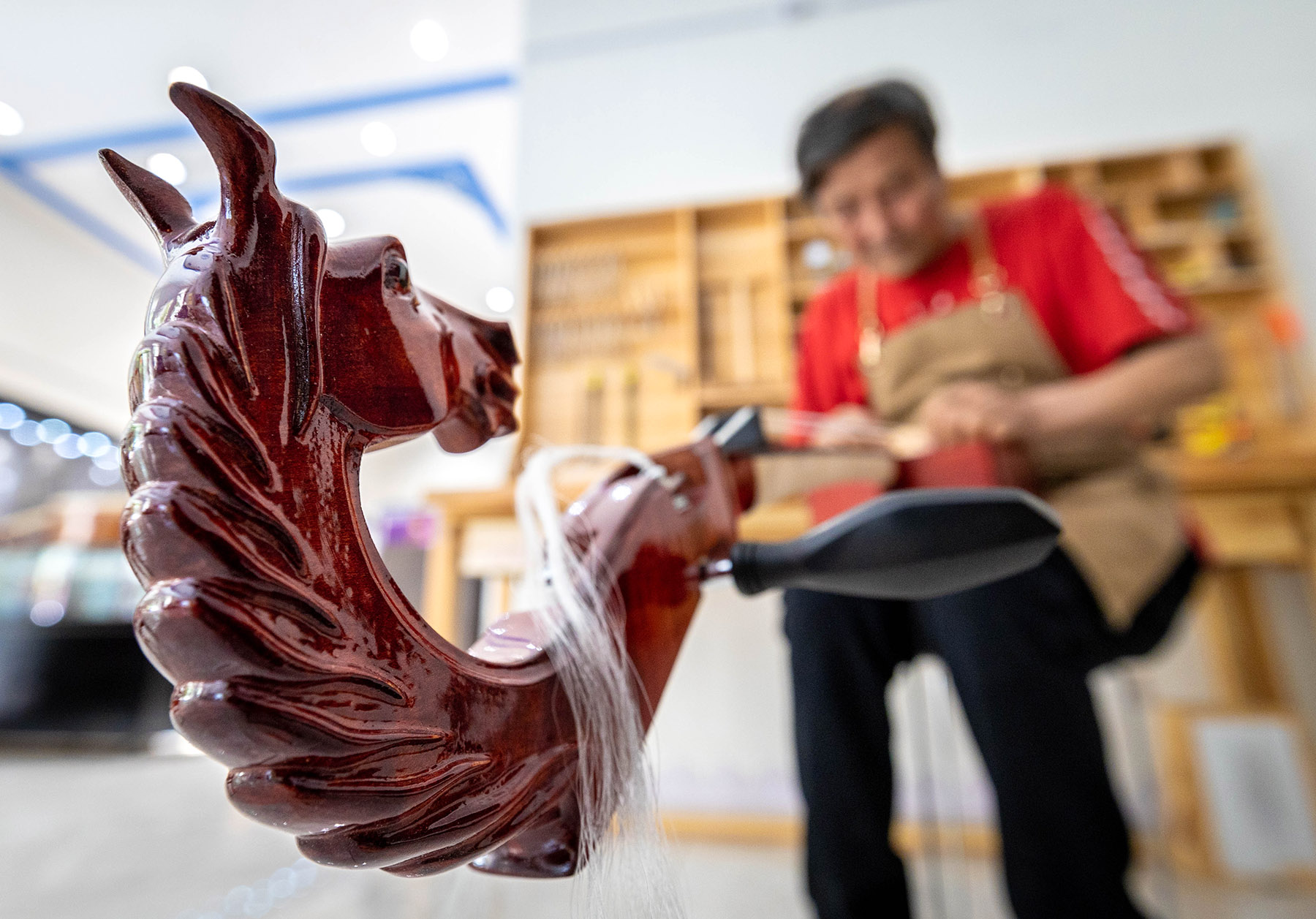
"So, when I carve the horse's head on the morin khuur, I want to make it vivid and elegant, with a refined head, almond-shaped eyes and long ears."
Once the body and horse's head have been finished, the instrument is fitted with strings. Traditionally made from horsehair, they are now often made from nylon thread.
Finally, the morin khuur is carefully tuned, and each string is adjusted to make the perfect sound, a delicate process that requires patience and skill.
In 2003, Ulji devised a new type of morin khuur, which has been warmly received by buyers, by introducing a curve to the normally flat front and back of the instrument's trapezoid-shaped body.
"The slight change to the resonance box has impact on the air flow, reinforcing the sound," he explains.
The air flow inside the body of the instrument, like breathing, is crucial for it to produce sound, he adds.
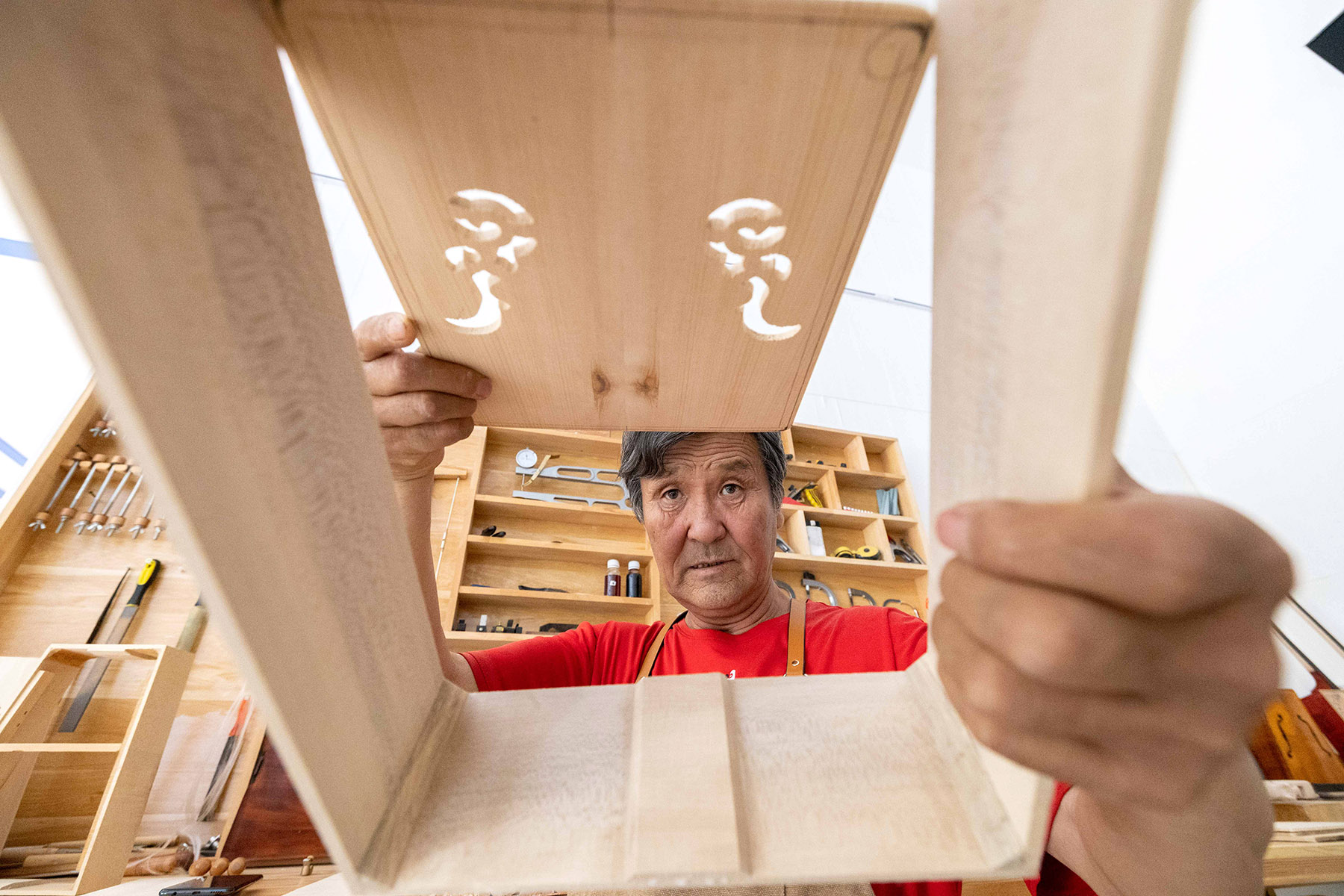
Tradition goes global
A significant moment in Ulji's career occurred in 2008 during the opening ceremony of the Beijing Olympic Games, where the renowned musician Chi Bulag performed on one of Ulji's instruments.
Accompanied by a band of 120 musicians, which included Naren Mandal, Ulji's elder son, playing another of his instruments, Chi Bulag captivated the global audience with his passionate performance.
Ulji first encountered Chi Bulag in 2005 and was struck by his dual mastery as both a virtuoso performer and a skilled craftsman of the morin khuur, boasting an extensive collection of instruments.
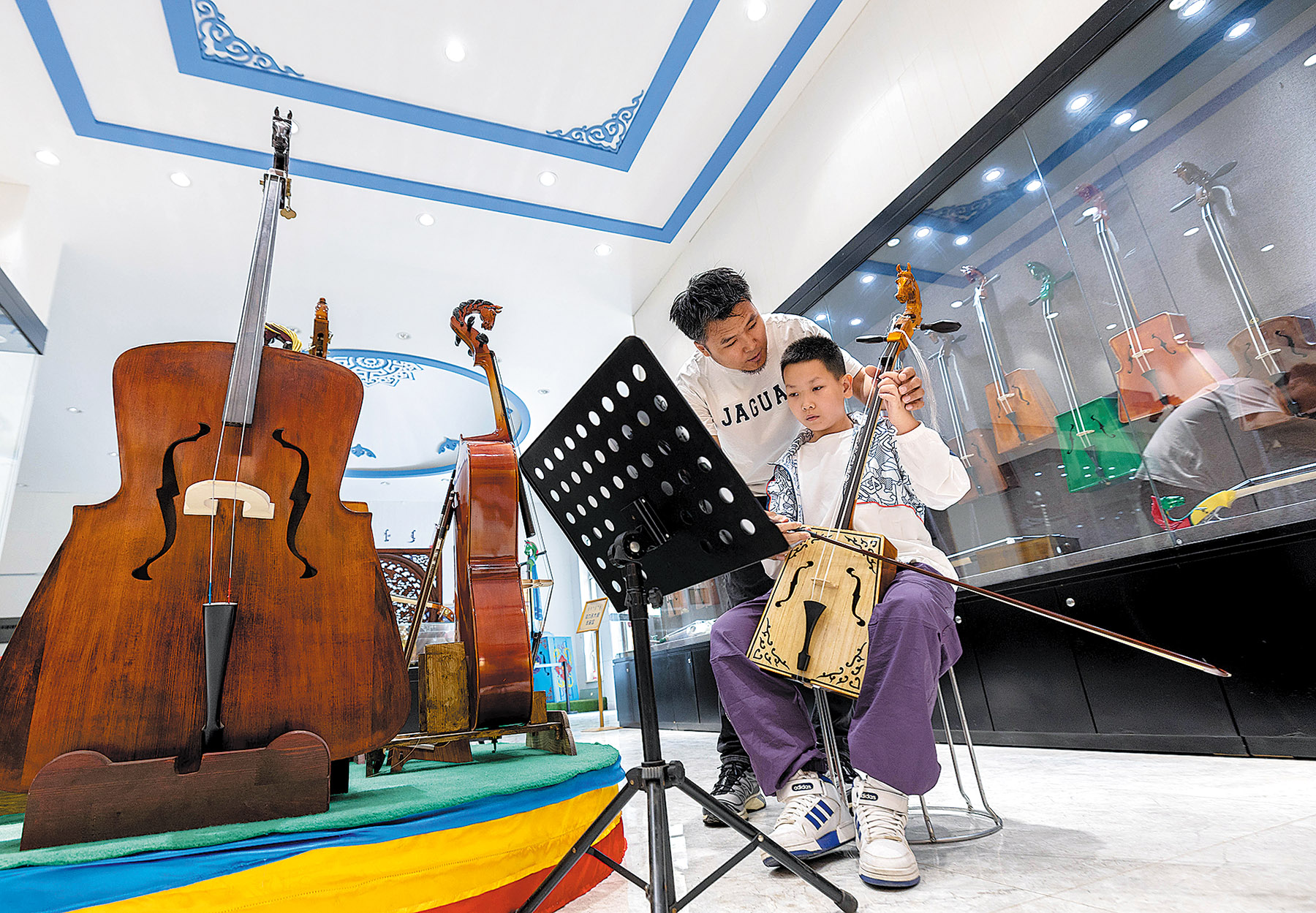
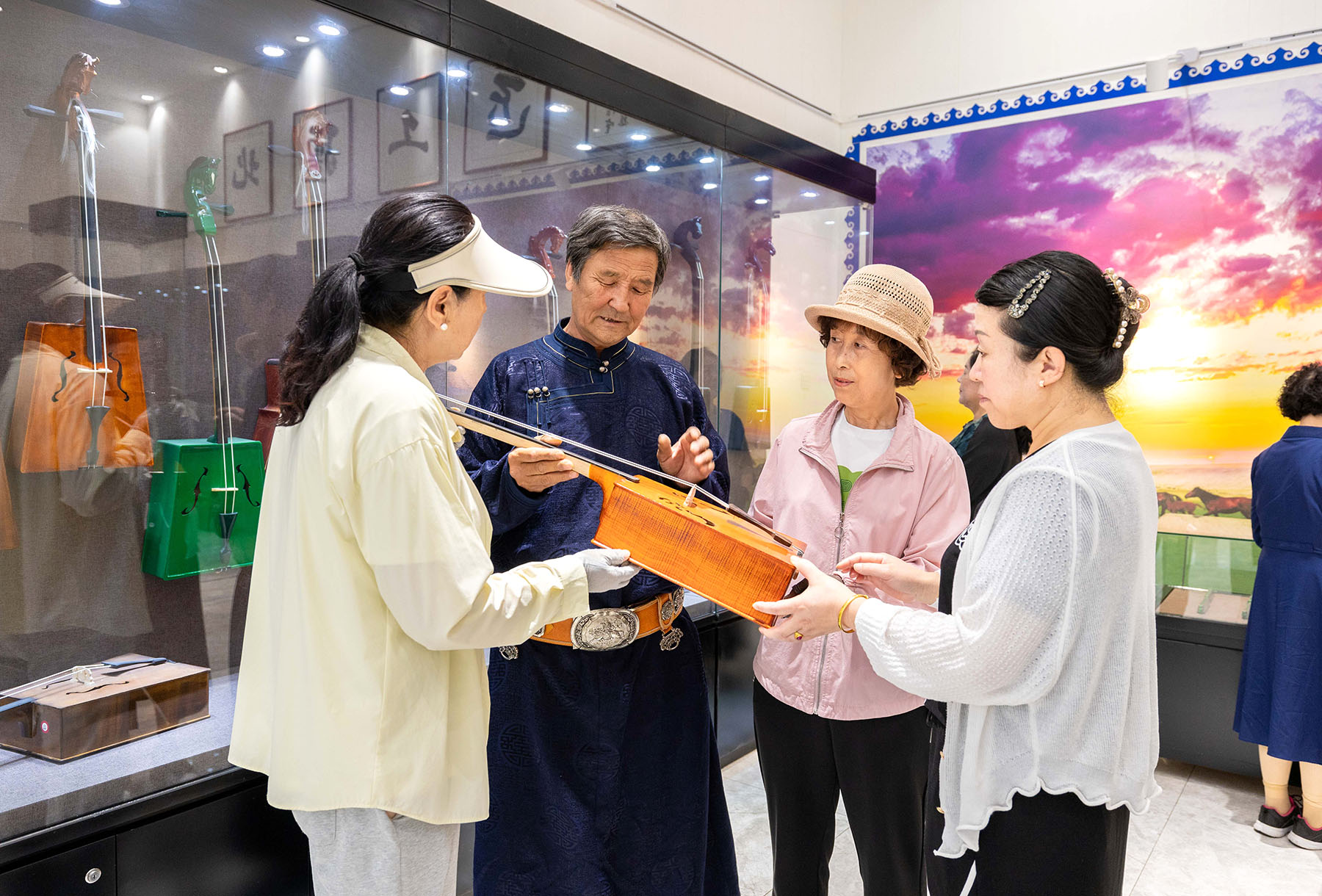
About 50 days before the Olympic Games opening ceremony, Chi Bulag called Ulji, inviting him to make a morin khuur for his performance.
"I was very excited. We had lots of discussions about the instrument. I worked in my workshop day and night for a month. I forgot to eat and sleep, but I didn't feel tired until I finished making it," Ulji recalls.
For him, each of the instruments he has made is like a child.
Despite the dozens of meticulous steps involved in the process, he never grows weary. "When I'm in my workshop crafting an instrument, my sole focus is on executing each step flawlessly," he says.
His dedication has had a great impact on his children.
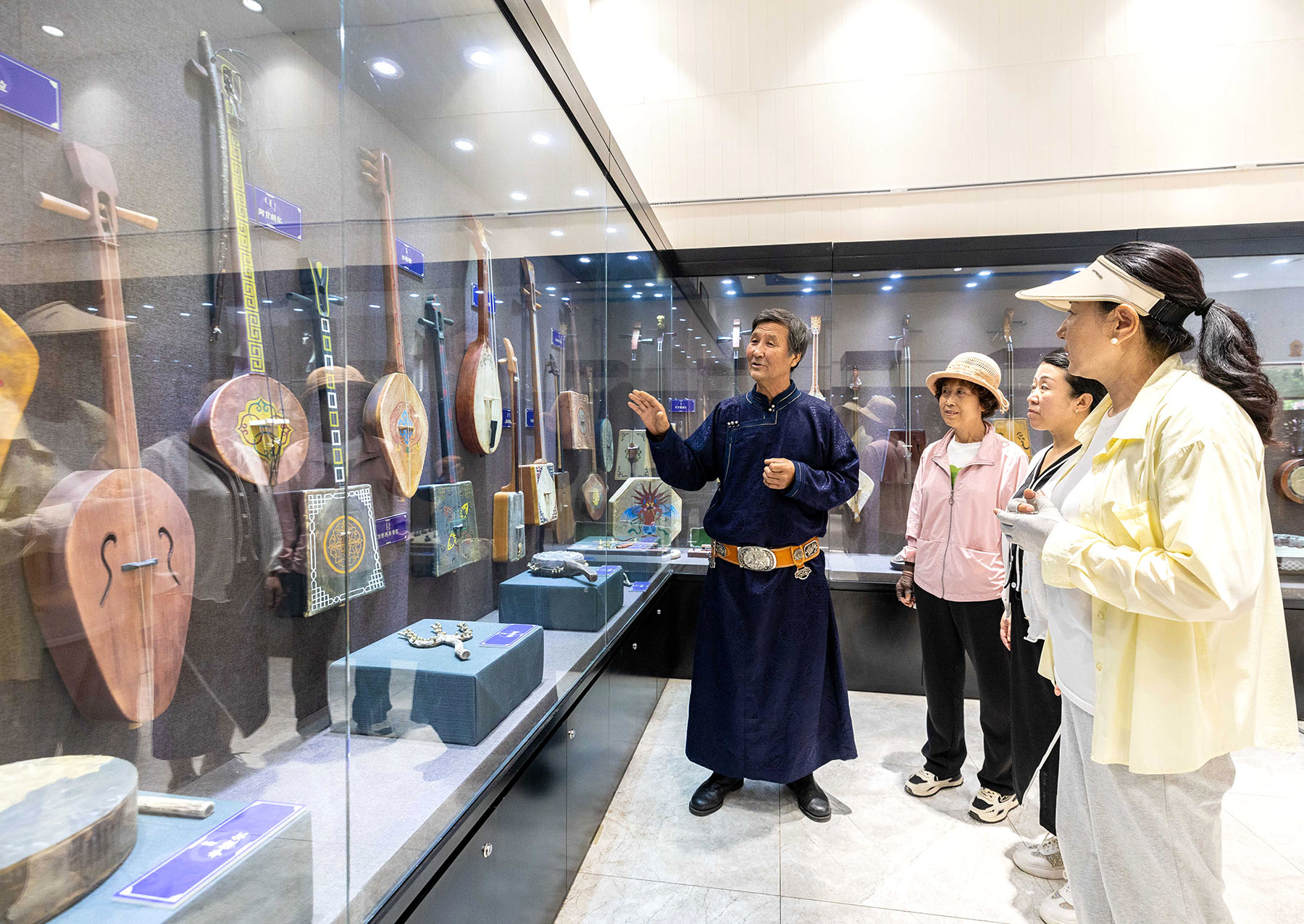
Tulguur, Ulji's younger son, reminisces about his childhood spent observing his father craft instruments in his workshop.
"His hands bear the marks of dedication. He imparted to me the art of making the morin khuur and taught me how to play it. It's a family tradition that runs deep within me," says Tulguur, 40, whose name means "pillar of the family" in Mongolian.
"Despite the ease that technology brings to the crafting process, my father remains committed to handcrafting. He always emphasizes that only through the hand can we truly sense the instrument and produce the desired sound."
ALSO READ: Traditional instruments resonate in the modern age
The elder son, Naren Mandal, also learned to play the morin khuur as a child. "Its melody evokes memories of home, akin to a cherished family member," says the 42-year-old.
Now, Naren Mandal focuses on overseeing the workshop's management. Alongside the morin khuur, the workshop is dedicated to revitalizing various traditional instruments of the Mongolian ethnic group and advocating for its folk music.
Contact the writers at chennan@chinadaily.com.cn



